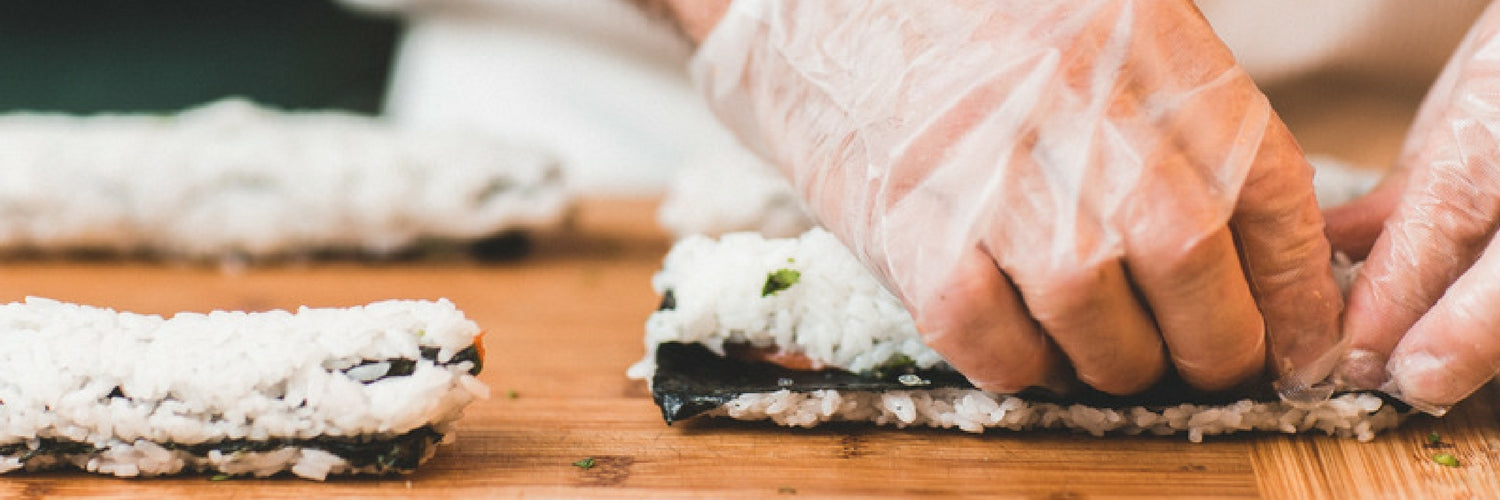
Japanese Seaweed 101: Common Types of Seaweed Found in Japanese Cuisine
3 minutes
Many Japanese dishes, from soups to salads to sushi, contain flavorful and healthy seaweeds. You can make many Japanese side dishes and meals on your own with these common Japanese seaweed ingredients.
Seaweed is often a part of many meals in Japanese cuisine. Healthy and nourishing, Japanese seaweed is also a popular selection by health food advocates and those seeking new nutritious flavors. As America continues to grow more health conscious, many regular supermarkets now sell Japanese seaweed.
While there are several healthy and flavorful Japanese seaweeds that you might choose from to incorporate into your diet, there are three that you can start with. The following seaweeds play important roles in many Japanese dishes, and are also easier to find.
Nori
This edible Japanese seaweed is also known as Porphyra, and is the dark green, almost black seaweed used to wrap most maki rolls or sushi hand rolls.
Nori comes in sheets similar to a thin paper, and the process for preparing nori is actually very similar to that of making paper. The Welsh and the Irish have also enjoyed nori for centuries, although they refer to it as laver.
While many Americans have not experienced nori outside of a sushi restaurant, it has many other culinary uses in Japanese cookery. You can crumble and sprinkle atop rice, or you can just eat on its own as a snack. These days you can even find flavored nori, enhanced with a variety of spices, sesame and soy, which is applied as the nori is toasted.
Health Benefits of Nori
Nori packs myriads of vitamins and minerals, including calcium, iodine, vitamins A and C, iron and zinc. However, it also typically contains high amounts of sodium, so if you need to watch your sodium intake you should consume nori sparingly.
Wakame
Sold in a dried form and most commonly added to miso soup, wakame is a type of edible kelp. This Japanese seaweed is popular in various Japanese recipe because of its health benefits and ease of use. Dried wakame must first be added to warm water before it can be eaten, at which point the dried seaweed will re-hydrate and expand significantly. After soaking, its dark color will change to a dark, healthy green.
Health Benefits of Wakame
Wakame is full of protein. It also helps to lower blood pressure and the risk of various forms of cancer and other maladies. Wakame incorporated into miso soup makes a particularly healthy combination, and is a daily staple in Japanese cuisine.
Kombu
Kombu is another especially healthy Japanese seaweed belonging to the kelp family. Its primary use is in soups and hot pot dishes. It is one of the main ingredients when making dashi, a broth used for miso soup and other soup dishes. It delivers a powerful flavor, and you can also enjoy it in salads and teas.
Health Benefits of Kombu
Kombu is especially healthy and contains many vitamins and minerals that help to fight against cancer and improve heart health. In Okinawa, Japan, kombu is consumed in extremely large quantities, which may account for that particular area having the longest lived population.
